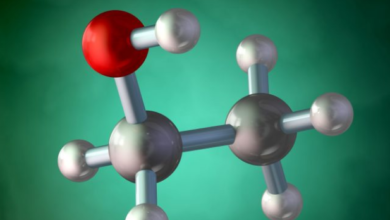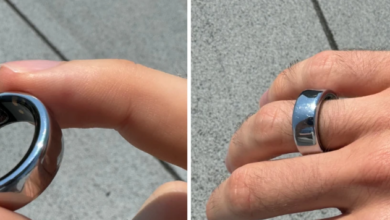4 Reasons Your Mac Keeps Crashing (And What to Do About It)

According to Apple, first-time owners of macOS devices hold on to their Macs for four years. They then pass it along or resell it.
That suggests that iMac and MacBook units last for at least four years, but Apple says it can be more.
While it’s true that Macs are reliable, it’s a myth that viruses don’t infect them. They can also behave erratically, experiencing frequent crashes.
If your Mac keeps crashing, you’d want to know why right away, as it’s a sign your system is about to fail. However, it may also only be a simple resource-related issue that you can discover and fix with a few steps.
This guide discusses the top causes of Mac crashes and tips for resolving them, so be sure to read on.
Table of Contents
1. It’s Out of Storage Space
Did you know that a standard DVD-type file has an average size of 4.38 GB? Or that a collection of 600 high-resolution images can consume 2 GB of storage space?
So, it shouldn’t come as a surprise if your Mac’s storage space runs out after years of using it. That’s especially common among older models, as they were available in 128 GB versions.
Your Mac’s storage, after all, is the permanent container of all the digital data you have on your computer. It’s non-volatile, storing saved information even after the device itself stops receiving power. All that data, in turn, remains stored so long as you don’t delete or overwrite it.
If your Mac runs out of storage, it won’t let you save new data onto your drive. That includes macOS and app updates, designed to squash bugs and boost performance.
Therefore, failing to install updates can make your OS and apps run erratically. That can lead to frequent lags, or worse, crashes.
To prevent your Mac from running out of space, delete old files and move the important ones to an external drive. Another tactic is to transfer some of your data to iCloud (or another cloud service) to free up disk space.
The folks at https://setapp.com/ also recommend cloning your hard drive to have a backup if your system fails. You can then delete files on your Mac drive once you make a clone, as it’s a duplicate of your entire system.
2. Outdated Software and Incompatibilities
Apple requires all apps on the Mac App Store to undergo testing for macOS compatibility. That ensures each app that makes it to the official app store is safe, secure, and free of crashes and bugs.
That’s why when Apple updates macOS, you usually need to update your other apps. Doing so assures the app meets the new macOS version’s compatibility requirements.
So when you fail to update apps, they may become incompatible with your Mac’s OS. That can cause your Mac to crash and restart whenever you try to launch the outdated app. If it happens repeatedly, it can ultimately result in your laptop shutting down.
Downloading and installing the latest app updates can resolve the problem. Better yet, automate your Mac to download and install them.
3. Too Many Processes Running Simultaneously
Whenever you do something on your Mac, your action creates one (or more) processes. They’re codes containing instructions for the activity you want your Mac to do.
For instance, launching MS Word creates a process telling your Mac that you want to run the text editor. Every action you do on Word, such as typing or saving, also creates instructional codes. Simply keeping the app open, even if it’s inactive, has a process associated with it.
Each process then uses part of your Mac’s RAM or memory. So the more apps and actions you do on your Mac, the more memory consumed.
If the RAM in use nears its capacity (8 GB in typical MacBooks), you can expect your Mac’s efficiency to drop. That can cause the spinning beachball to appear and stay until there’s enough RAM again. Unless you kill some processes to free up memory right away, your device may start to heat up.
A Mac that gets hot enough may shut down to prevent internal damage.
So, if your iMac or MacBook keeps crashing, check the Activity Monitor to see active processes. You can then Quit or Force Quit each app you don’t need to free up precious memory.
4. You’re Choking Your Mac
Another heat-related reason why your MacBook keeps crashing is a clogged airway.
Mac laptops have air vents near the hinge connecting the screen and the keyboard. They serve as the exit for the hot air the fans push out of the computer.
Your Mac’s casing itself features a design that allows for proper airflow. If you look at your laptop’s underside, you should see four rubberized “bumps” by each corner. Those act as legs, raising the computer to let air pass underneath.
If those airways get clogged with dirt, your Mac can choke and overheat. The same can happen if you use your computer on a soft surface, such as your bed, couch, pillows, or blankets.
Overheating, as mentioned above, can trigger your Mac to crash or shut down to prevent damage. So to keep it from doing so, make sure you clean its case. You can check out Apple’s guide on cleaning macOS and iOS products for details on how.
It’s also best to avoid using your Mac on soft surfaces and place it on a sturdy table instead. That ensures the device can stand on all four legs and that the underside remains free to let air through.
Determine Why Your Mac Keeps Crashing
There you have it, the most crucial facts you need to know about why your Mac keeps crashing. Now you know it can be due to low storage and memory, outdated apps, or overheating.
So, if your Mac restarts again due to a problem, try the fixes we suggested. That way, you can keep it from shutting down and causing you to lose unsaved work.
Are you looking for other informative guides on tech, science, or health? If so, then feel free to check out our latest news and blog posts!






